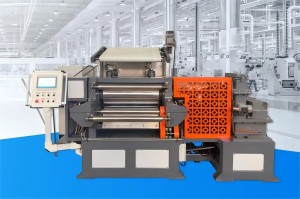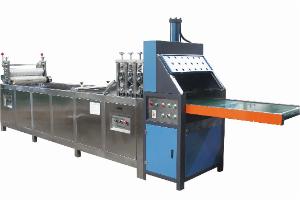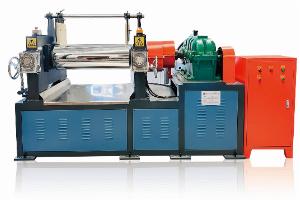
What Is a Rubber Calendering Machine and Why Does It Matter?
2025-09-23
Introduction: The Unsung Hero of Rubber Production
When we think of rubber products, tires and belts usually come to mind. But behind every finished product lies a crucial step in the process: rubber calendering. The Rubber Calendering Machine is an essential piece of equipment that transforms raw rubber compounds into thin, uniform sheets. Without it, producing consistent, high-quality rubber products would be nearly impossible.
In simple terms, this machine takes the raw rubber mix and presses it through heavy rollers, creating sheets with precise thickness and smooth surfaces. Think of it like rolling dough with a rolling pin—but on an industrial scale and with way more precision.
How Does a Rubber Calendering Machine Work?
The process begins with feeding pre-mixed rubber into the machine. The Rubber Calendering Machine typically has two, three, or even four rollers. As the rubber passes through, the rollers exert controlled pressure, flattening the material into sheets.
Key highlights of the process include:
-
Uniform Thickness: Every sheet comes out with consistent dimensions.
-
Custom Finishes: Machines can produce smooth, matte, or patterned surfaces.
-
Continuous Output: High production capacity makes it ideal for large-scale industries.
The beauty of calendering is that it ensures every batch of rubber looks and performs exactly the same—something manual methods just can’t achieve.
Applications Across Industries
The Rubber Calendering Machine isn’t limited to just one sector. Its applications are surprisingly broad:
-
Automotive: Tires, conveyor belts, and seals.
-
Footwear: Rubber soles, sheets, and protective layers.
-
Construction: Waterproofing membranes, gaskets, and insulation materials.
-
Industrial Manufacturing: Conveyor systems, machine belts, and friction materials.
From cars to sneakers to roofing sheets, calendered rubber plays a role in our everyday lives more than we realize.
Advantages of Using Rubber Calendering Machines
So, why are manufacturers shifting from older methods to calendering? Here’s the deal:
-
Precision and Consistency – No more worrying about uneven thickness.
-
High Efficiency – Large volumes can be processed continuously.
-
Versatility – Capable of producing sheets, coated fabrics, and multi-layer materials.
-
Cost Savings – Less waste, faster production, and fewer manual errors.
Honestly, once a factory invests in a good Rubber Calendering Machine, it becomes a game-changer for scaling production.
Things to Consider Before Choosing a Machine
Not all machines are the same, so here are a few things buyers usually check:
-
Number of Rollers – More rollers often mean more versatility.
-
Roller Material – Needs to withstand heat, pressure, and wear.
-
Automation Level – Semi-automatic or fully automatic options available.
-
Supplier Support – A reliable supplier offers installation, training, and after-sales service.
And here’s the truth: working with a trusted manufacturer not only gets you the machine, but also peace of mind.
Conclusion: The Backbone of Rubber Manufacturing
The Rubber Calendering Machine might not be the flashiest piece of equipment, but it is one of the most important. By ensuring precision, efficiency, and flexibility, it has become an indispensable part of modern rubber production lines.
So next time you see a tire or a conveyor belt, remember—before it reached you, a Rubber Calendering Machine had already played its quiet but powerful role.


